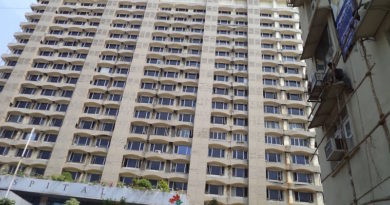All you need to know about Minimally Invasive Heart Surgery
By Dr. Mangesh Kohale, Cardio-Thoracic Surgeon at Wockhardt Hospital Mumbai Central
If you’ve been told that you or your loved one needs a heart surgery, then you would want to know all about it right? For most of us, what may come to our mind is an open heart surgery—and the long recovery time it needs. But for many, a minimally invasive heart surgery can also be considered. Here are some facts about it.
Minimally invasive heart surgery is carried out to treat a variety of heart conditions. It can be used for several different cardiac procedures, including: Coronary bypass (is a procedure that restores blood flow to your heart muscle by diverting the flow of blood around a section of a blocked artery in your heart), valve surgery (to repair or replace diseased heart valves), and aneurysm repair (a surgery to repair an aneurysm which is a bulge in a blood vessel caused by a weakness in the blood vessel wall, usually where it branches). Many other heart procedures like mitral valve repair and replacement, tricuspid valve repair and replacement, aortic valve replacement, atrial septal defect and patent foramen ovale closure and Atrioventricular septal defect surgery, are done with the help of it.
What is minimally invasive heart surgery?
Minimally Invasive Surgery is a newer form of heart surgery in India. It is a relatively new and advanced technique of performing coronary bypass for the treatment of coronary heart diseases. In this technique, the heart is approached through the side of via a small 4- 6 cm incision. This cut is placed just under the nipple. The chest is entered between the ribs without cutting any bones and by splitting the muscle. This makes the procedure ideal in diabetics and older patients who have poor resistance to infection.
Who should go for it?
Minimally invasive heart surgery isn’t an option for everyone, but it can offer potential benefits in those for whom it’s appropriate. You will have to consult your doctor who will evaluate you and may let you know, if you are the right candidate for it. Your doctor may conduct a physical examination, review your medical history and perform tests. Based on the tests, he may guide you on whether you should or shouldn’t opt for it. Moreover, your expert may recommend you have the surgery at a medical centre with surgeons and a surgical team experienced and trained in conducting it.
How to prepare for it:
Before opting for the surgery, your doctor will explain you what to expect before, during and after the surgery, and potential risks of the surgery. Your doctor may discuss concerns you may have about your minimally invasive heart surgery. Also, you may need to have your hair shaved off at the locations of your body where the procedure will take place. Before you are admitted to the hospital for your surgery, talk to your family about your hospital stay and discuss help you may need when you return home. Your doctor and treatment team may give you specific instructions to follow during your recovery when you return home.
Benefits of the surgery:
- No splitting of the breastbone
- Less painful
- Blood loss is almost negligible eliminating blood transfusion in most and eliminating blood borne infection
- Lower risk of bleeding
- Reduced ICU and hospital stay
- It can help Improve postoperative pulmonary function
- Improves quality of life
- Less blood loss
- Smaller, less noticeable scars
- Recovery time may be shorter
- The best part is that all the blocks irrespective of their location in the heart can be bypassed in a safe and predictable manner.




